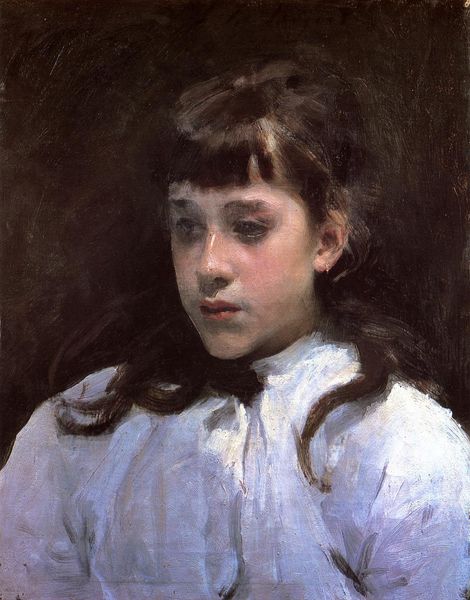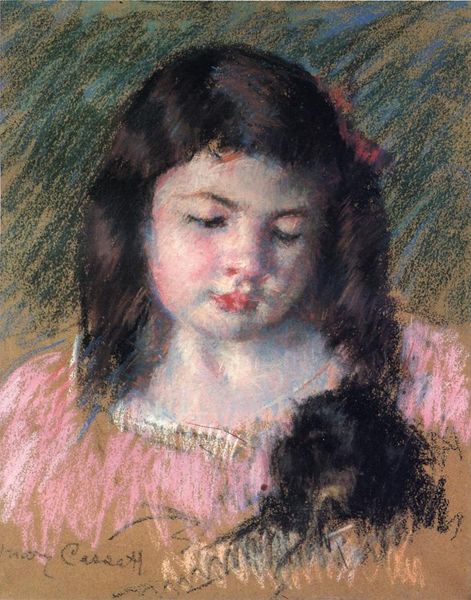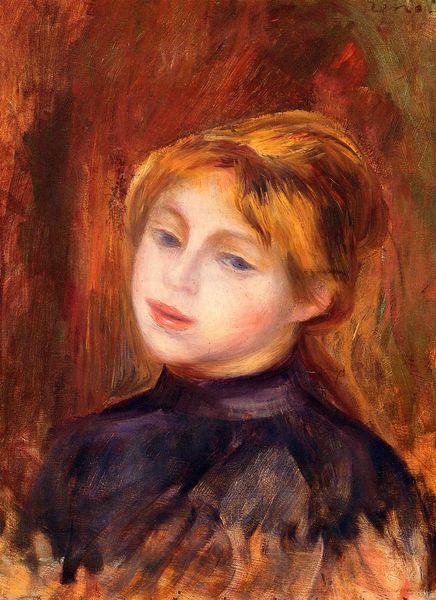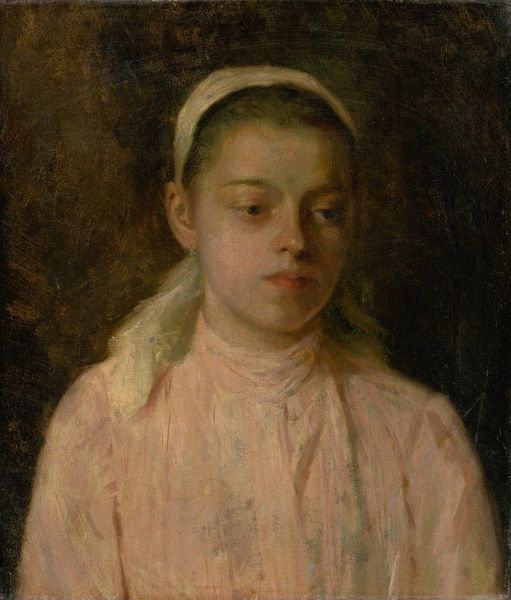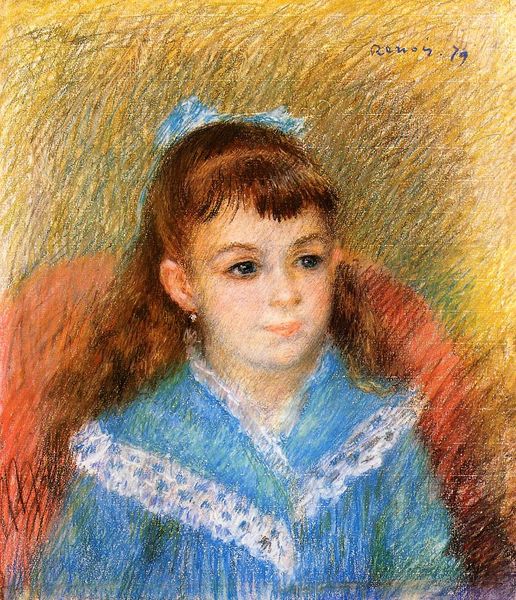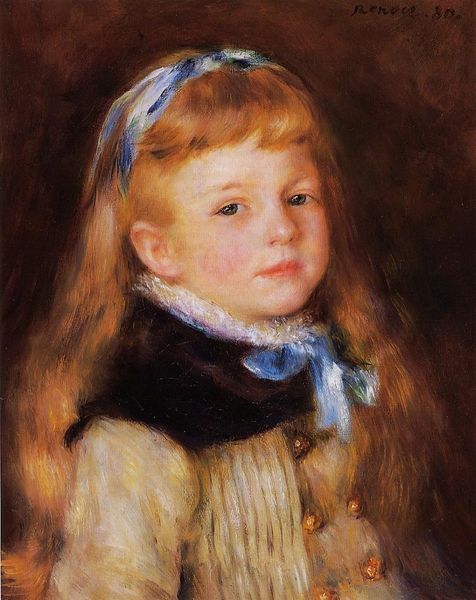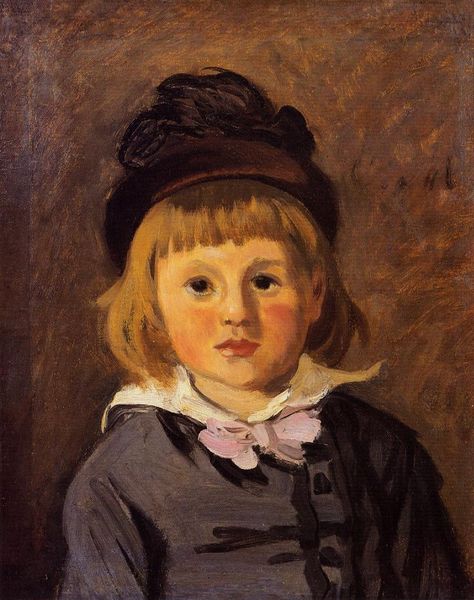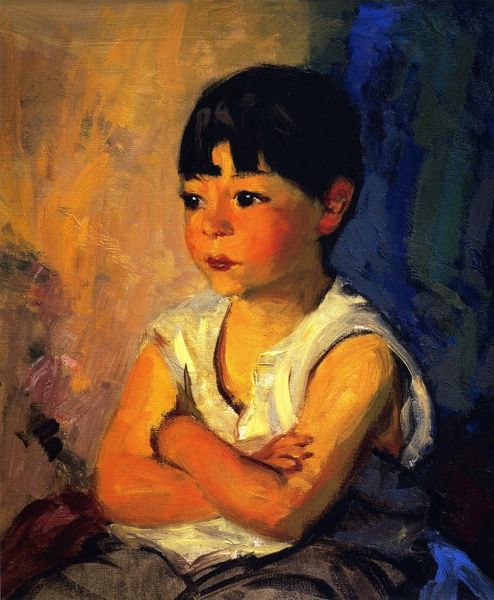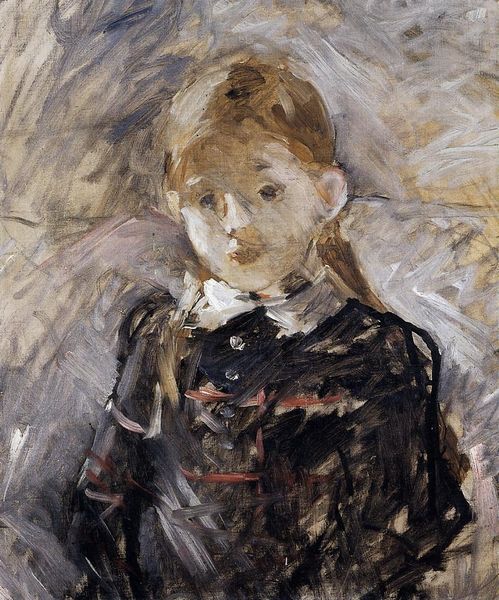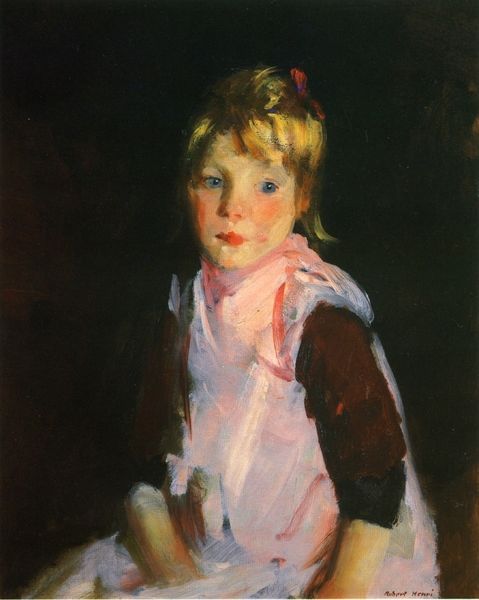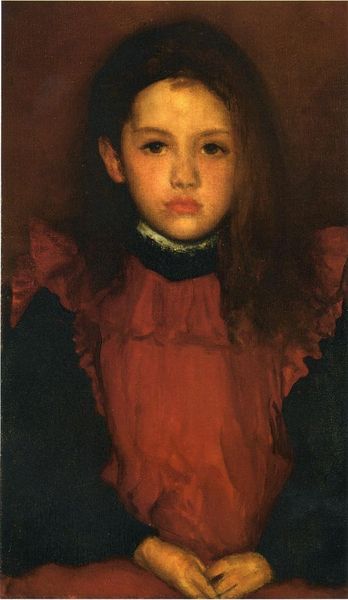
Dimensions: 26.67 x 23.49 cm
Copyright: Public domain
Curator: Looking at "Violet Sargent" painted around 1875 by John Singer Sargent in oil, I find the somber tones unexpectedly moving. There is an inescapable feeling of seriousness around this child. Editor: I agree. It’s remarkable how Sargent captures a pensive quality in such a young face. There's a hint of melancholy but her gaze maintains an unsettling self-possession for someone so young, no? But it goes beyond individual mood; the portraits of young, white upper-class children often operated as important symbols of wealth and the reproduction of power in those societies. Curator: True. One sees similar expressions mimicked across portraiture of children in Europe as painting moved toward impressionism, which really transformed the function of portraiture. You mention reproduction of power; and it's also true that these displays also were deeply embedded with imperialist overtones, suggesting control over lives of both women and children. Editor: Exactly. It makes you wonder about the subject, the little Violet herself, right? Was she encouraged to adopt a kind of precocious sensibility, mirroring perhaps the emotional repression of adults surrounding her? I read these types of pieces in light of current-day expectations around children: We value their playfulness; their spontaneity. Here it feels we have robbed a girl of this inherent privilege, demanding in its place a premature somberness, at least artistically. Curator: The technique plays into this too. The brushstrokes seem looser in the dress, which makes her head the focus of the painting, directing our attention squarely onto this expression and that somber thoughtfulness. Her expression is central. Her gaze feels weighted, intentional. We see, if nothing else, Sargent’s ability to capture such complex, interior thoughts in such a deceptively simple format, the portrait, where, by now, we have demanded insight to its sitter. Editor: I completely agree. Ultimately, looking at Violet's portrait provides an entry point to unpack many elements tied to class, identity and the political history surrounding childhood's representations, then and now. Curator: And perhaps to be reminded of the social constructions of childhood in art across diverse times, allowing us to consider a new politics of innocence through artistic portrayals.
Comments
No comments
Be the first to comment and join the conversation on the ultimate creative platform.
